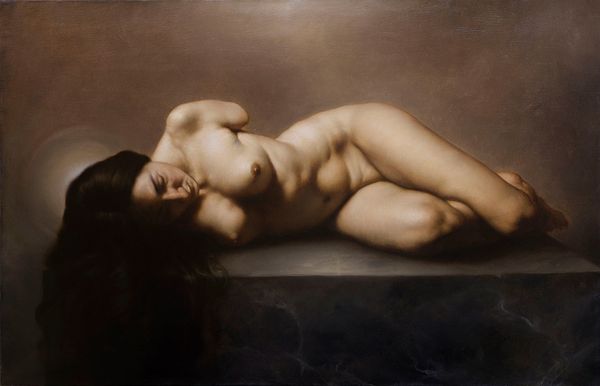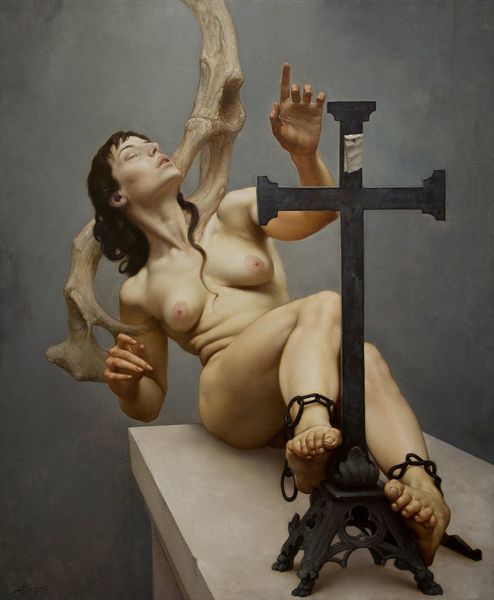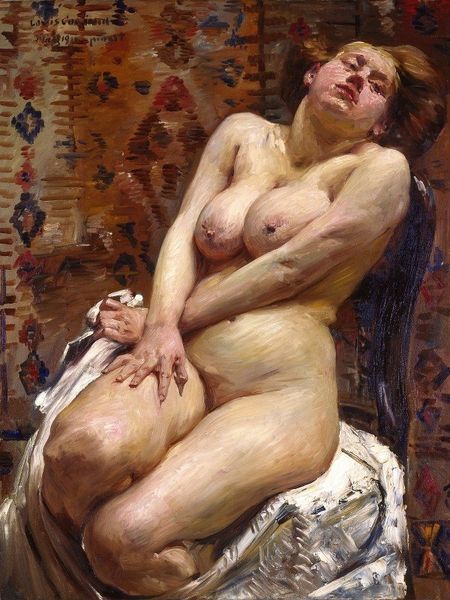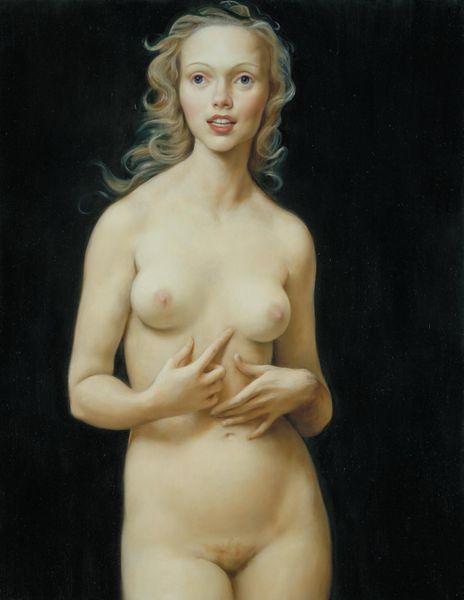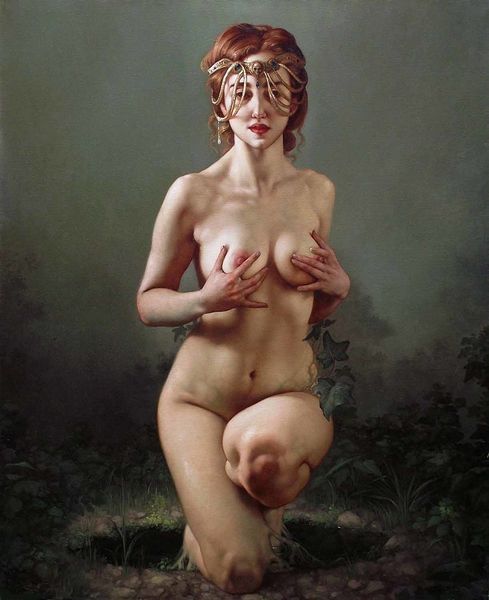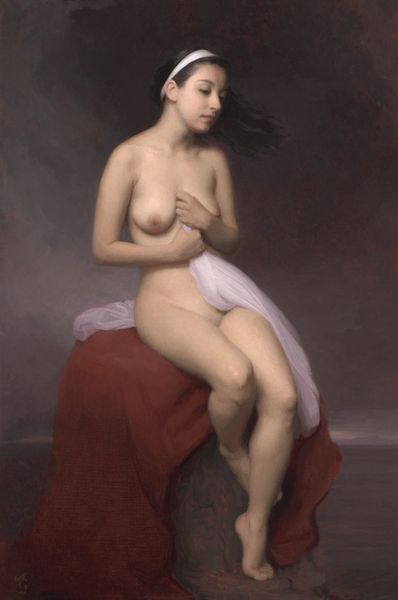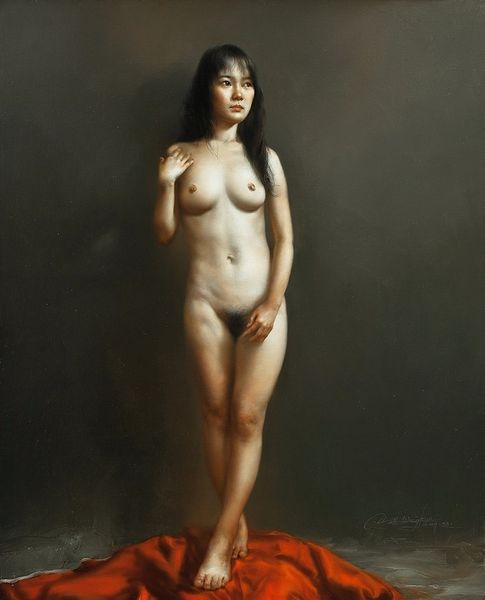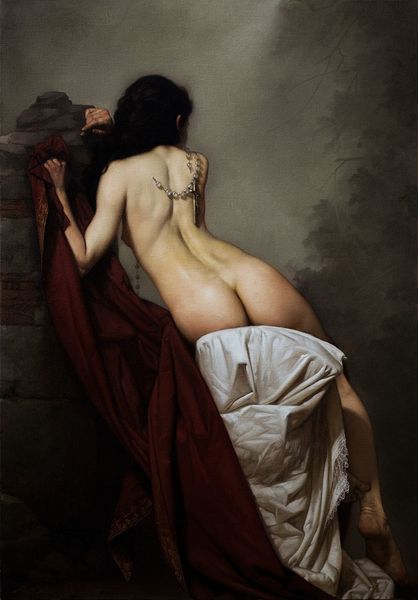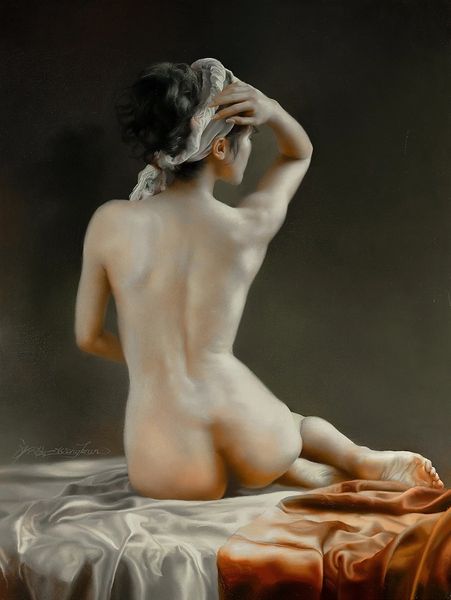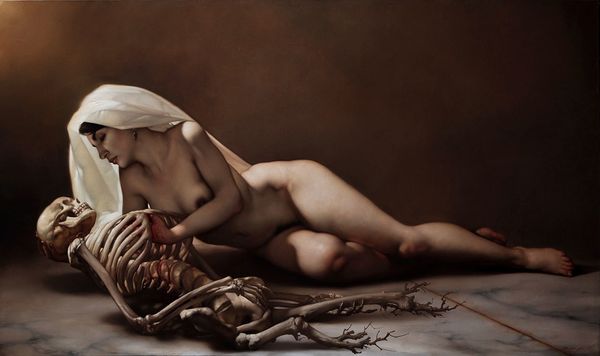
painting, oil-paint
#
portrait
#
allegory
#
painting
#
oil-paint
#
momento-mori
#
underpainting
#
chiaroscuro
#
history-painting
#
charcoal
#
nude
#
surrealism
#
realism
#
blur
Copyright: Modern Artists: Artvee
Curator: Let's delve into Roberto Ferri’s "Gea" from 2013, a powerful oil painting steeped in allegory and executed with remarkable realism. Editor: Woah, first impression? Intense! It's got this Caravaggio-esque vibe, all drama and shadow, but there’s also a tenderness, especially in her face. A slightly weird mashup, actually. Curator: Absolutely. Ferri engages deeply with the chiaroscuro tradition, enhancing the painting’s emotional depth and symbolic weight. We see this interplay of light and shadow creating a theatrical intensity but through an interesting lens of contemporary surrealism. It challenges conventional notions of beauty. Editor: Definitely throws some curves into the whole "beauty" debate. Blindfolded, seated on, or perhaps emerging from, a stark skull… It hits you with that mortality thing pretty hard. A sort of surreal and visceral reminder that we're all just... passing through, I guess. Does that resonate with Gea, the earth goddess herself? Curator: Precisely. The work grapples with complex themes surrounding mortality, fertility, and blindness. The figure of Gea, rendered blindfolded with subtle streams of blood, invites an exploration of power, vulnerability, and perhaps, even environmental destruction in contemporary times. The work might also encourage discourse on gender and societal expectation regarding body image. Editor: That blood…it is a bit disturbing. I feel like there is definitely a link with something dark lurking beneath this otherwise beautiful woman in this picture, perhaps representing our destruction. A dark and very strong statement! The blurred underpainting, adds to a sense of uneasiness too. The question is...Is she emerging or sinking? Curator: Indeed, these elements work together to create a painting rich in interpretive possibilities. "Gea" reflects broader concerns in art history—challenging and engaging the viewer beyond simple aesthetics. It prompts discourse about how we are meant to "see", regarding cultural narrative of art throughout time, and especially the representation of the female form. Editor: I agree. Thinking about it, there’s something quietly rebellious here. It’s not just a pretty picture; it’s a statement—raw, exposed, almost defiant, and even thought-provoking. I dig it. Curator: Precisely. Ferri's "Gea" compels us to see, question, and feel – that makes it undeniably powerful.
Comments
No comments
Be the first to comment and join the conversation on the ultimate creative platform.
